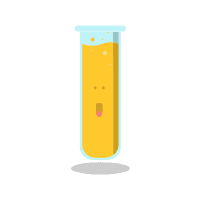
Topic: 5.9-5.10 Organisms and Environments (2)
Quiz by Grade 5 Science - Texas Education Agency
Grade 5
Science (2010) (Archived)
Texas Essential Knowledge and Skills (TEKS)
Feel free to use or edit a copy
includes Teacher and Student dashboards
Measures 7 skills from
Measures 7 skills from
Track each student's skills and progress in your Mastery dashboards
With a free account, teachers can
- edit the questions
- save a copy for later
- start a class game
- automatically assign follow-up activities based on students’ scores
- assign as homework
- share a link with colleagues
- print as a bubble sheet
30 questions
Show answers
- Q1A freshwater ecosystem has various food webs. One of these food webs is shown below. Which organisms transfer the most energy within the food web?Algae, because they are the producers in this webBass, because they are predators in this webCopepods, because they support two chains in this webCrayfish, because they are at the bottom of this web60s5.9.B: Organisms and Environments
- Q2The table below lists the preferred diet of several types of birds. Based on this information, which two types of birds do not compete for food resources?Purple martin and yellow warblerEastern bluebird and purple martinLesser goldfinch and eastern bluebirdAmerican goldfinch and lesser goldfinch60s5.9.A: Organisms and Environments
- Q3Some students examined two samples of pond water with a hand lens over three days. Each day they compared what they saw with pictures of samples their teacher had labeled. Their observations are listed below. Based on their observations, the students concluded that mosquitoes undergo complete metamorphosis while dragonflies undergo incomplete metamorphosis. Which of these explains why the students’ conclusion is correct?The mosquito life cycle includes larvae that become pupae, while the dragonfly life cycle includes adults that develop directly from nymphs.The mosquito life cycle includes nymphs that hatch from eggs, while the dragonfly life cycle includes adults that develop directly from larvae.The mosquito life cycle includes eggs that hatch in water, while the dragonfly life cycle includes nymphs that develop in water.The mosquito life cycle includes larvae with wings, while the dragonfly life cycle includes nymphs.60s5.10.C: Organisms and Environments
- Q4A student observes the following activities while walking in a park. Which of these living organisms was interacting with another living organism in the environment?Fire antHawkBlue jayBee60s5.9.A: Organisms and Environments
- Q5The nesting habits of four types of birds are described in the table below. If all the dead branches and dying trees in a wooded area are removed, which bird’s nesting habit would be most affected?Barn swallowBaltimore orioleDowny woodpeckerBelted kingfisher60s5.9.C: Organisms and Environments
- Q6A food web for some organisms in an African rain forest is shown below. Which organisms in this food web eat only consumers?CivetsGorillasOkapisLeopards60s5.9.B: Organisms and Environments
- Q7Some animals, such as lions, have pointed teeth, while other animals, such as cattle, have flat teeth. The difference in the shape of these animals’ teeth is most closely related to —the type of predators the animals havethe sounds the animals makethe type of organisms the animals consumethe habitat the animals live in60s5.10.A: Organisms and Environments
- Q8A group of students made the observations listed below about the size, shape, and appearance of their hands. Which of the students’ observations describe inherited traits?Observations 1, 3, and 4 onlyAll the observationsObservations 2, 3, and 5 onlyObservations 2 and 5 only60s5.10.B: Organisms and Environments
- Q9A partial food web of a pond ecosystem is shown below. Which type of organism is missing from this food web?ConsumersProducersDecomposersPredators60s5.9.B: Organisms and Environments
- Q10For a science assignment a student was asked to observe some organisms and then make a table to classify the organisms’ traits as inherited or learned. The student’s table is shown below.4 learned behaviors, 4 inherited traits3 learned behaviors, 5 inherited traits2 learned behaviors, 6 inherited traits1 learned behavior, 7 inherited traits60s5.10.B: Organisms and Environments
- Q11A student observing birds in a park records some ways that birds interact with living and nonliving parts of their environment. All the following observations are ways that a bird interacts with nonliving parts of its environment except —responding to cold temperatures by fluffing its feathersdrinking and taking a bath in a puddle of waterfeeding insects to its chicksreacting to morning sunlight by singing60s5.9.A: Organisms and Environments
- Q12The shells of sea turtles are flatter than the shells of land turtles. Sea turtles are also different from land turtles because sea turtles cannot pull their head or limbs into their shell to protect themselves from predators. Instead, the head, shell shape, and flippers of sea turtles help them escape from predators mainly by allowing them to —blend into their surroundingshold their breath for several minutesdig deep holes for their eggsswim and dive easily60s5.10.A: Organisms and Environments
- Q13Tropical climates have warm temperatures and abundant sunlight all year. What must be available for plants in these climates to make their own food throughout the year?ShadeWaterBacteriaBirds60s5.9.A: Organisms and Environments
- Q14Many types of grazing animals live in Africa. The pictures show two of these animals that have about the same mass and height at the shoulder. Based on observations of the pictures of these animals, which statement describes an advantage that only one of these animals has in obtaining food?"The Thomson’s gazelle has a body shape that allows it to run faster when chasing prey.The gerenuk has a sharp, pointed nose for detecting the scent of predators.The Thomson’s gazelle has horns that can be used to move tree branches out ofthe way to reach food.The gerenuk has a long neck that allows it to reach high to eat from trees.60s5.10.A: Organisms and Environments
- Q15A farmer is reading a nature guide to learn how to make changes to a pond so that it will attract and support wildlife. The guide gives the suggestions listed below. Which suggestion involves interactions between two groups of living organisms?Suggestion 1Suggestion 4Suggestion 2Suggestion 360s5.9.A: Organisms and Environments
